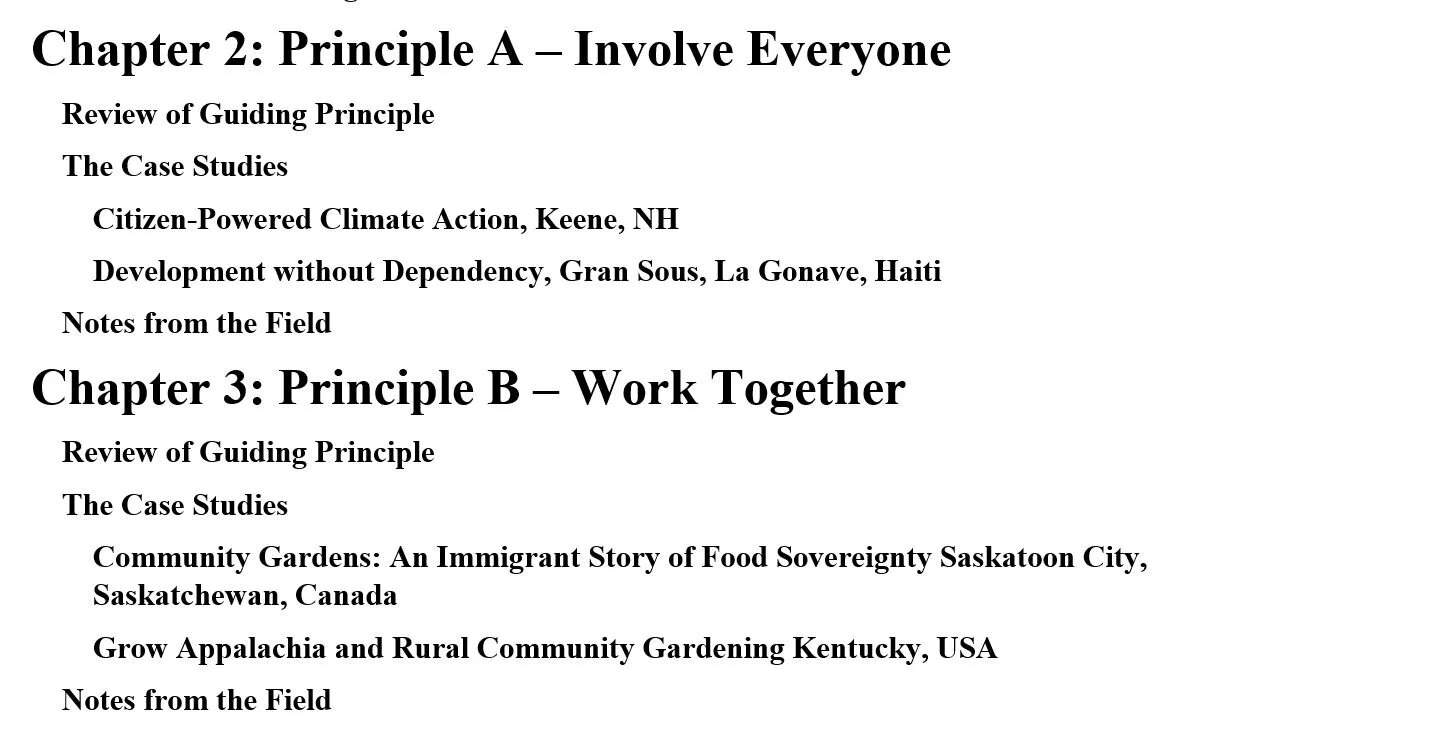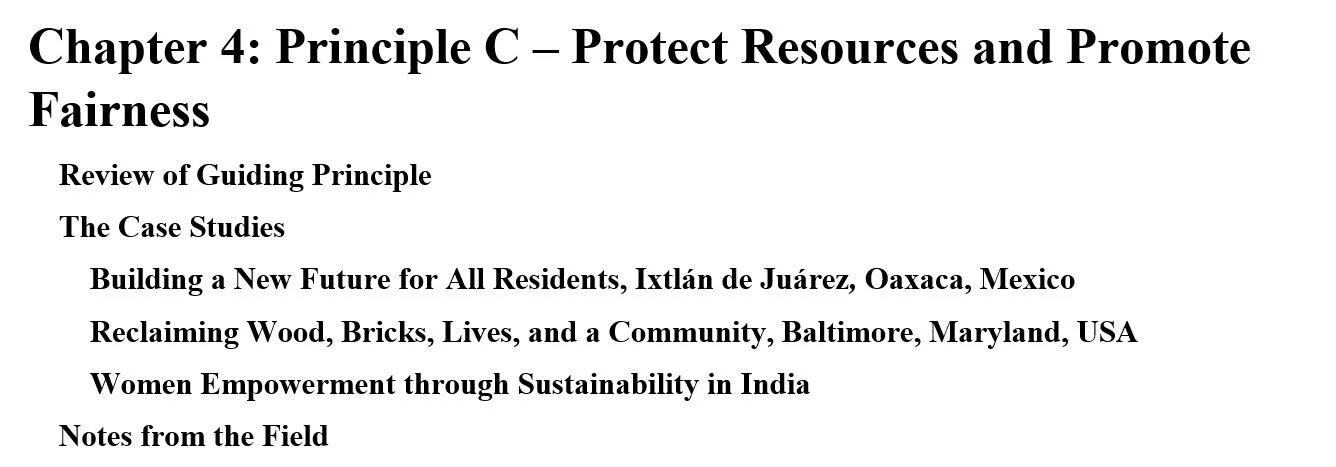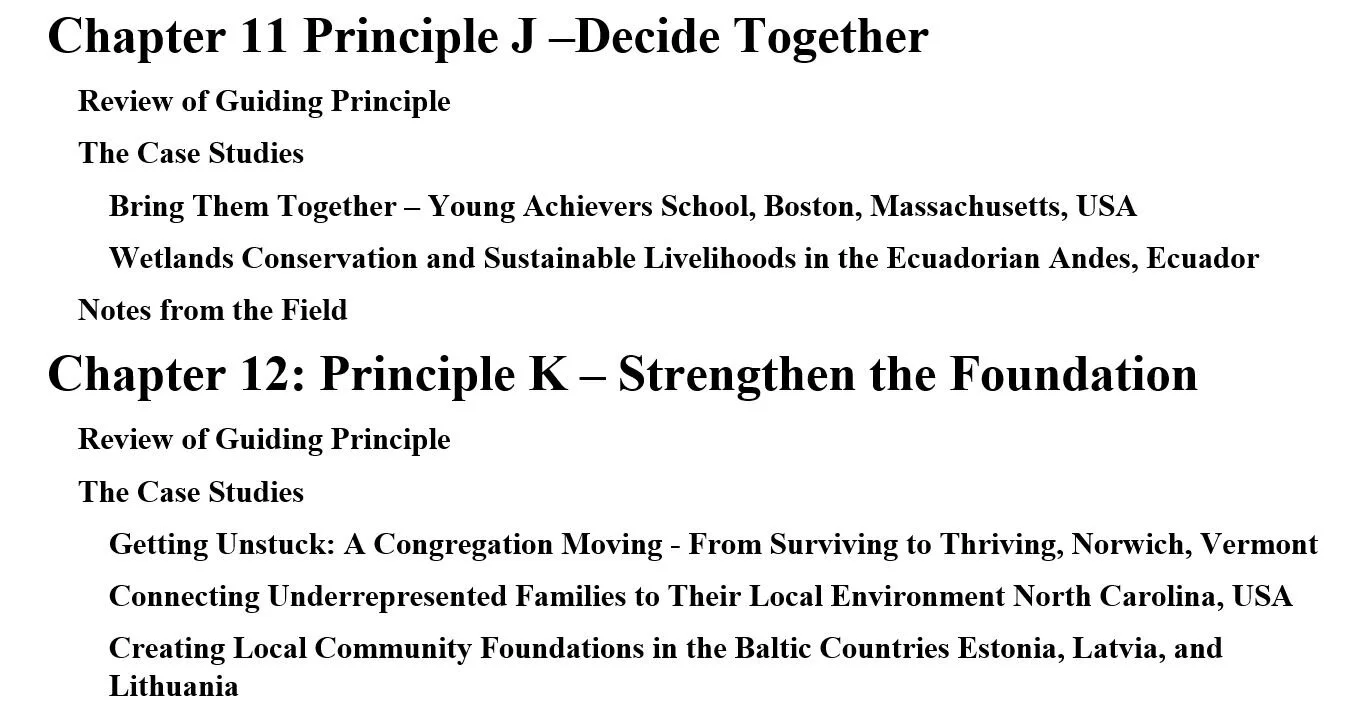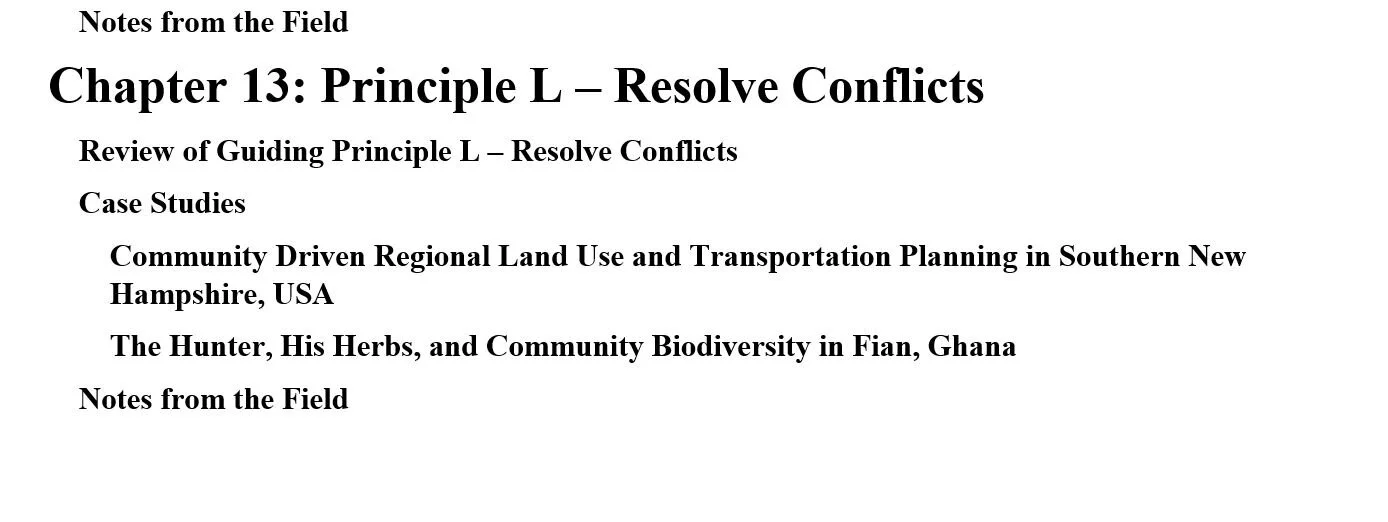Introduction (excerpt)
“If you want to go fast, go alone. If you want to go far, go together”
— African Proverb
This book is written for those who care about enhancing the health and vitality of their community. If building healthy and thriving communities is something you are passionate about, actively involved in, or aspire to pursue, my hope is that you will use this book as a do-it-yourself guide. It focuses on building a healthier society that engages and involves all its members. The stories and case studies it presents illustrate the many ways that community members, as well as elected and appointed leaders, have engaged in actions and practiced leadership that made a real difference in their communities.
The contributors to this book believe that strong local communities are the foundation, the tap roots, of a healthy, participatory, and resilient society. In this age of ever-changing technology, mega-corporations, and economic globalization, livelihoods are at risk, natural resources are being depleted, and climate change is damaging the very planet upon which we all depend. National leaders and global corporations are failing to address this growing crisis. However, throughout the US, and in many other nations, local communities are finding innovative ways to thrive while protecting natural resources, enhancing the livelihood of their community members, and growing social vitality. Perhaps rather than looking to national governments, corporations, or new technologies to solve our environmental and social problems, we should learn from successful communities in order to find paths to a more sustainable future. These communities include not just local governments but also groups of individuals that are working together for the common good, such as neighborhood associations, schools, local and Indigenous groups, faith communities, businesses, and nonprofit organizations.
I have found that this often challenging yet rewarding work is somewhat like building or renovating a house. Many of the guiding leadership principles we will discuss are critical for establishing or reinforcing the existing foundation of a community. Without a strong foundation, future gains can easily collapse. The principles shared here also address ways to improve the plumbing and wiring systems of a community, including free-flowing energy and communication, information sharing and dissemination, and numerous feedback loops. You know what happens in a house when the sewer pipe is blocked! No community (or house) can stand without a viable structure, which is strong, but also resilient enough to be modified when necessary to meet the needs of the future. Houses (and communities) most importantly provide shelter for all within — shelter that can weather difficult times. And, finally, a thriving community is a home; a home where there is trust, collaboration, social justice, and where conflicts or disagreements are resolved amiably.
This book will share our research and reflections on each of the 12 Guiding Principles. It includes explanations and short examples — illustrations of each principle along with 25 Case Studies from around the world from knowledgeable contributing authors/practitioners, and Notes from the Field, which list practical do’s and don’ts. No, we cannot give you all of the answers to the questions you will have but we hope that this book will provide you with tools and resources for practical, effective leadership and collaboration that can guide you in your own important work of helping to build a community that people can truly call home.
Chapter 1 (excerpt)
Challenges of Our Communities: Growing Local Leadership
“Our true destiny ... is a world built from the bottom up by competent citizens living in solid communities, engaged in and by their places”
— David W. Orr
The Foundation of Society
How can local communities thrive or become more successful?[i] I believe that any useful approach should include: 1) growing social vitality, empowerment, justice, equity, and trust within the community; 2) enhancing the livelihood of community members; and 3) improving local environmental and ecological conditions. In this book, there are 25 case studies as well as 19 brief examples of communities that are moving from surviving to thriving. These stories of diverse communities are located in 17 counties and 11 states in the USA. For example, the case study from Baltimore, Maryland, shares how an inner-city neighborhood with thousands of vacant and abandoned homes was able to reclaim wood and bricks through deconstruction while also reducing unemployment and helping to revitalize blighted neighborhoods. In Saskatchewan, Canada, locally initiated community-based gardens helped immigrants address food insecurity and built community connections. The case study from Hiware Bazar, India, illustrates how a village was transformed from a drought-prone and water-scarce impoverished settlement into an economically, environmentally, and socially strong community. These and many other inspiring stories of communities moving from struggling towards thriving, are told by knowledgeable contributing authors throughout the book.
I have found that there are many books, publications, and websites about improving local communities that give expert advice on what needs to be done, but pay far less attention to how this can be accomplished in a way that builds the strength of the community and a strong democracy. Today, many people in the United States seem to have lost faith in the value of our democratic traditions and citizen-empowered change, and instead favor a top-down, expert-driven, more “efficient” approach, frequently stating that we need to “run local communities like a business.” It appears that this mindset has also become more common in other countries around the world. Frequently, these citizens do not see that they have an essential role to play in the leadership of their community. In my many years of experience in local government in the US, international consulting, and now as a researcher/professor, I have not found this top-down/expert-driven approach to be successful in helping communities thrive. In fact, I have found the opposite to be true.
This book emphasizes how local elected, appointed, and volunteer leaders can help their communities thrive. It provides specific guidance based upon the 12 Guiding Principles, and offers specific tools on how to apply the requisite leadership and collaboration skills.
Challenges That Local Communities Are Facing
Today, local communities are facing many of the same challenges that state and national governments are facing (or, sometimes, avoiding). This includes the climate crisis, which is impacting our food systems and creating serious health risks for seniors and the vulnerable, through record summer temperatures, droughts, severe storms, and other climate impacts. Many jobs have been lost or are now unstable due to technological changes and globalization shifting manufacturing to other parts of the world. Local communities are also struggling to help refugees, impoverished and at-risk families, and the homeless. And the litany goes on and on.
There are real stresses in meeting the critical needs of a local community with limited financial resources. I remember how this stress was palpable for our town’s staff and elected leaders. At the same time, volunteerism was decreasing and we were forced to pay for help that had previously been done by volunteers. Research by Robert Putnam[i] and others have described many factors contributing to citizens’ decreasing involvement.
What to do? Where to turn? How can a local community, particularly one without wealthy members and adequate resources, turn itself around when it is struggling not just economically, but also environmentally and socially? Local community leaders face these concerns every day. These unsung heroes, who jump into critically needed local community leadership roles, have rarely received formal training in public and nonprofit administration, fund raising, or leadership. My hope is that the Guiding Principles and illustrative case studies in this book will provide a resource for you and other dedicated and brave individuals.
Citations
[i]. Robert Putnam developed the term “social capital” and published research on building engaged communities.
[i]. Indicators of success that I use include: a) economics: external funding is either not needed or there is a reduced dependency on this funding; b) environment: natural resource systems are recovering and/or there is sustainable harvesting/management of natural resources; c) equity: the equitable sharing of financial and natural resources is recognized as important; d) empowerment: there is strong social and organizational capacity in the organization. My working definition of sustainability is that there is an effort within the organization to achieve a balance among four characteristics: ecological integrity, economic security, empowerment and responsibility, and social well-being.








